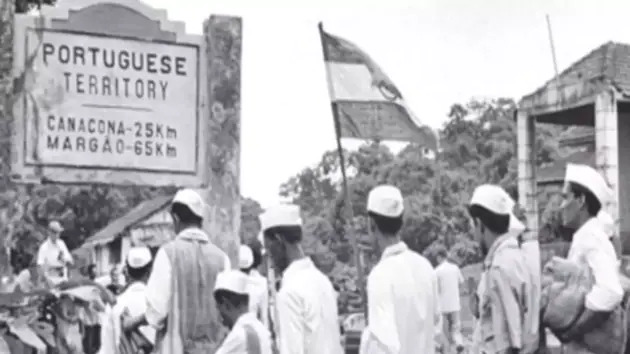Located on the west coast of India, Goa is the smallest state in India. It is celebrating its 50th Liberation day today.
Prime Minister Narendra Modi will visit Goa today and attend the function marking Goa Liberation Day celebrations at Dr. Shyama Prasad Mukherjee Stadium. He will felicitate the freedom fighters and veterans of ‘Operation Vijay’ at the function.
Goa Liberation Day is celebrated on 19th December every year to mark the success of ‘Operation Vijay’ undertaken by the Indian Armed Forces that liberated Goa from Portuguese rule.
By the end of the 15th century, Portuguese explorers, such as Vasco da Gama, had discovered a new sea route to India, making Goa an attractive base for the new trade routes.
In 1510, the Portuguese overthrew the ruling Bijapur sultan Yusuf Adil Shah with the help of a local ally, establishing a permanent settlement in Goa. This was the beginning of Portuguese rule in Goa that would last for over 450 years.
Goa prospered, becoming the largest city in Asia for a time, with a population of over 40,000. It became known as ‘Rome of the East’ and boasted over 300 churches.
By the middle of the 18th century, Portuguese Goa had expanded to most of its present-day state limits. Though they lost other possessions in India, the borders of Portguese control stabilised, forming the Estado da Índia Portuguesa or State of Portuguese India, of which Goa was the largest territory.
After India gained its independence from the British in 1947, India requested that Portuguese colonies on the Indian subcontinent be ceded to India. In line with the approach of the Estado Novo government regarding its overseas territories, Portugal refused to negotiate on the sovereignty of its Indian territories.
The Portuguese argued that India had no rights to this territory because the Republic of India did not exist at the time when Goa came under Portuguese rule.
The then Prime Minister Jawaharlal Nehru was against any police action or mass satyagraha forcing Portuguese to leave the place. He was more dependent on bringing international pressure.
But a massive satyagraha was launched by Bharatiya Janasangh and RSS. Also several opposition parties joined this agitation. The Congress passed a resolution opposing Indians participating in nation-wide Satyagraha, but asserted that it should be limited to `Goa people’.
However, bowing down to public pressure, Nehru was forced to swing into action. On 19 December 1961, the Indian Army invaded with Operation Vijay. The operation took 36 hours and ended with the surrender of the Portuguese Governor General Vassalo da Silva and the annexation of Goa, and of Daman and Diu islands into the Indian union.
Goa, along with Daman and Diu, was organised as a centrally administered union territory of India. On 30 May 1987, the union territory was split, and Goa became India’s twenty-fifth state, with Daman and Diu remaining a union territory.



